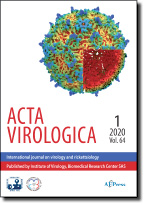Acta Virologica Vol.64, No.2, p.216-225, 2020
|
| Title: Historical analysis of epizootiological situation of rabies
on the territory of the Slovak Republic |
| Author: A. Ondrejková, Š. Švrček, R. Ondrejka, Z. Beníšek, J. Süli, V. Kopřiva, S. Zemanová, Z. Benkő, Ľ. Korytár |
|
Abstract: Currently, Slovakia is a rabies-free country, but the epizootiological situation of rabies was not always favorable. The main reservoir species of rabies virus in the first half of the last century was the domestic dog. Since 1906, hundreds of cases were reported, of which approximately 90% were infected dogs. The disease had a typical urban character. Since 1929, the number of rabid domestic animals decreased due to the implementation of dog vaccination campaigns in particular parts of Slovakia. From the second half of 1950s, red foxes (Vulpes vulpes) have become an important reservoir of the RABV. In this time period urban rabies in Slovakia changed into sylvatic form. One effective method of prevention and control of wildlife rabies is an oral rabies vaccination of red foxes. It is carried out in Slovakia since 1993. A detailed development of the rabies epizootiological situation on the territory of the Slovak Republic until the application of oral antirabies immunisation of foxes and the current situation after its performance is the main object of this review.
|
|
| Keywords: rabies; Lyssavirus; red fox; incidence; oral vaccination |
|
|
Published online: 04-May-2020
|
| Year: 2020, Volume: 64, Issue: 2 |
Page From: 216, Page To: 225 |
doi:10.4149/av_2020_211
|
|
 download file download file |
|
|
|
|
 download file
download file
